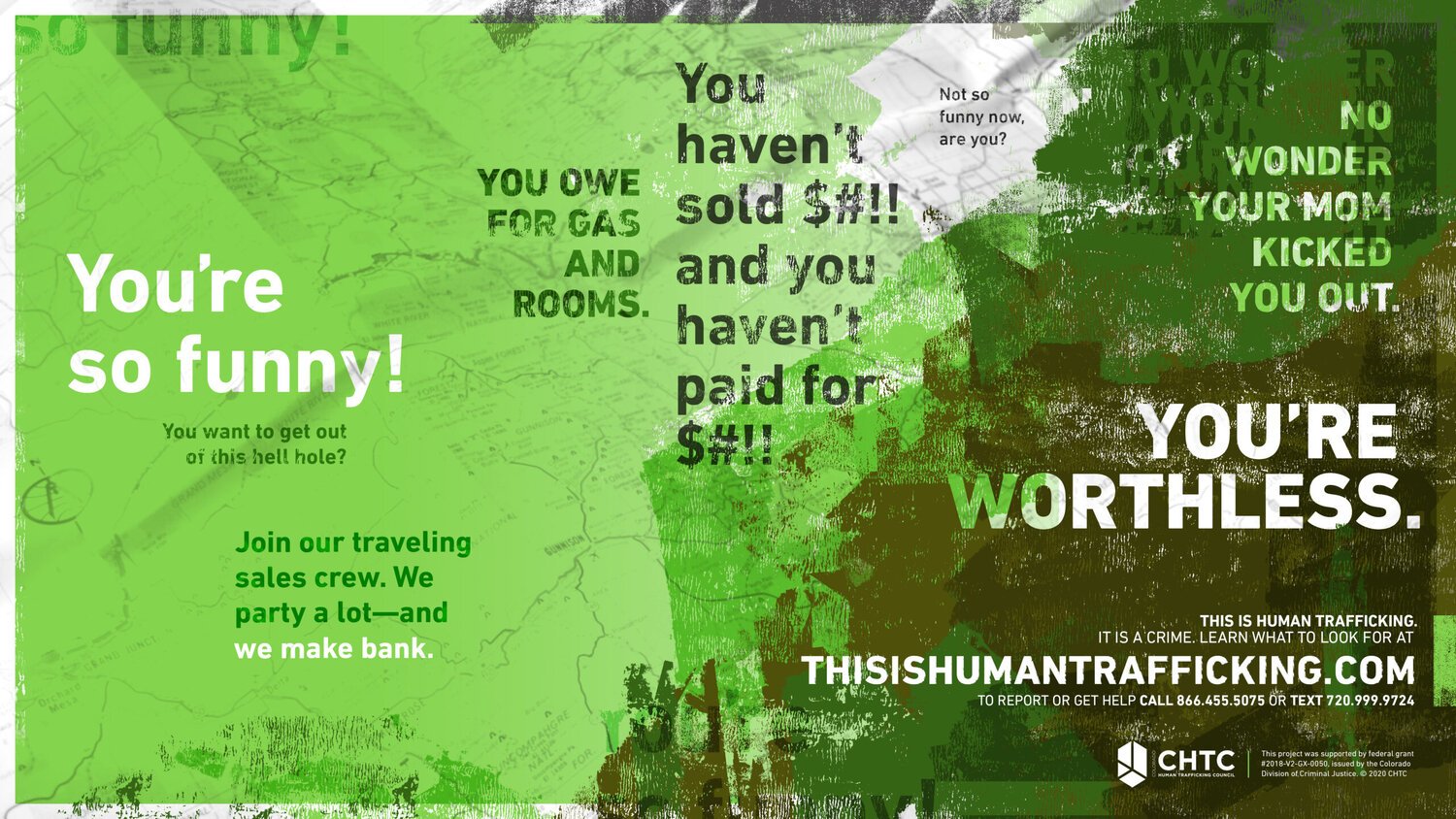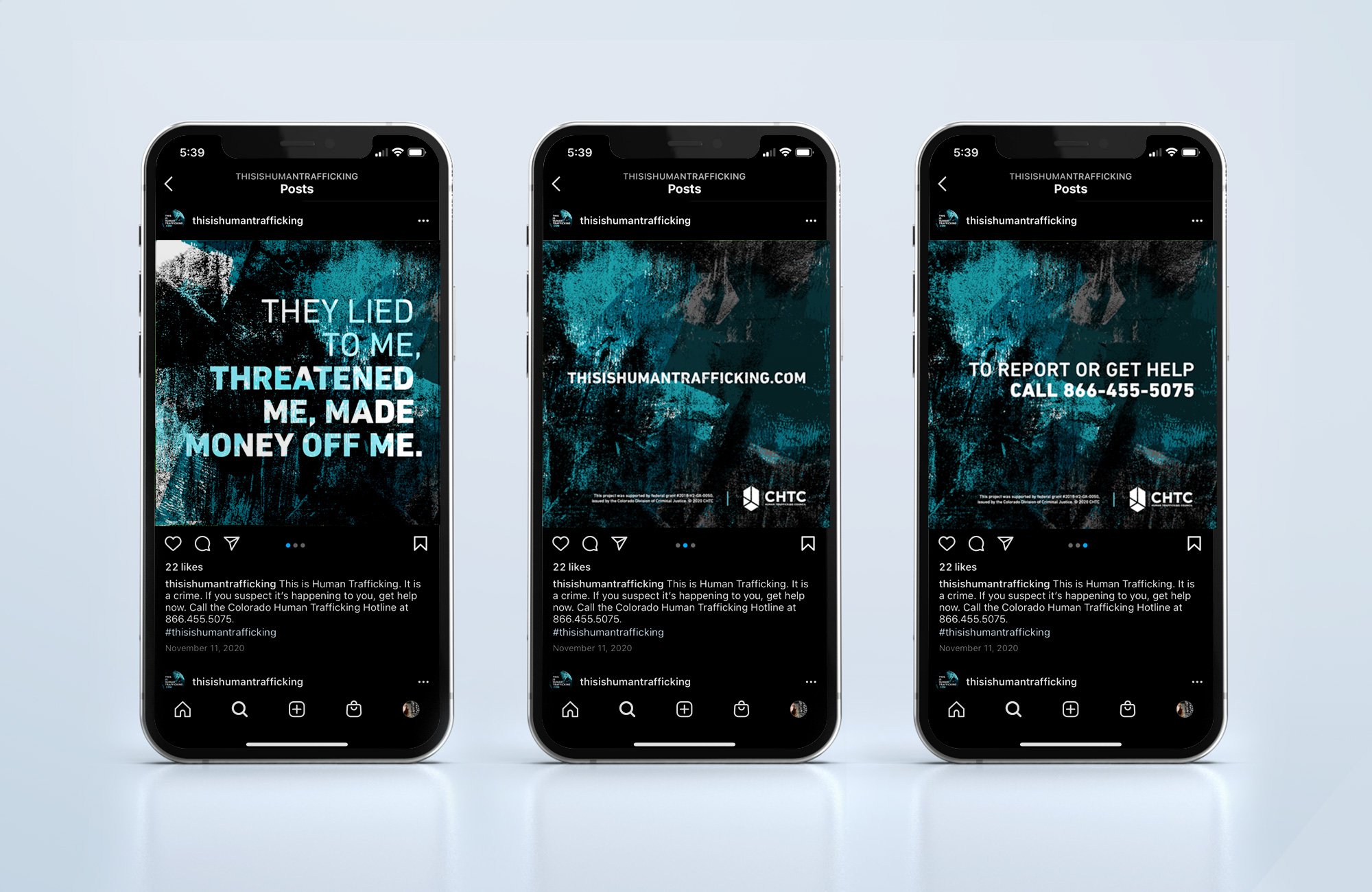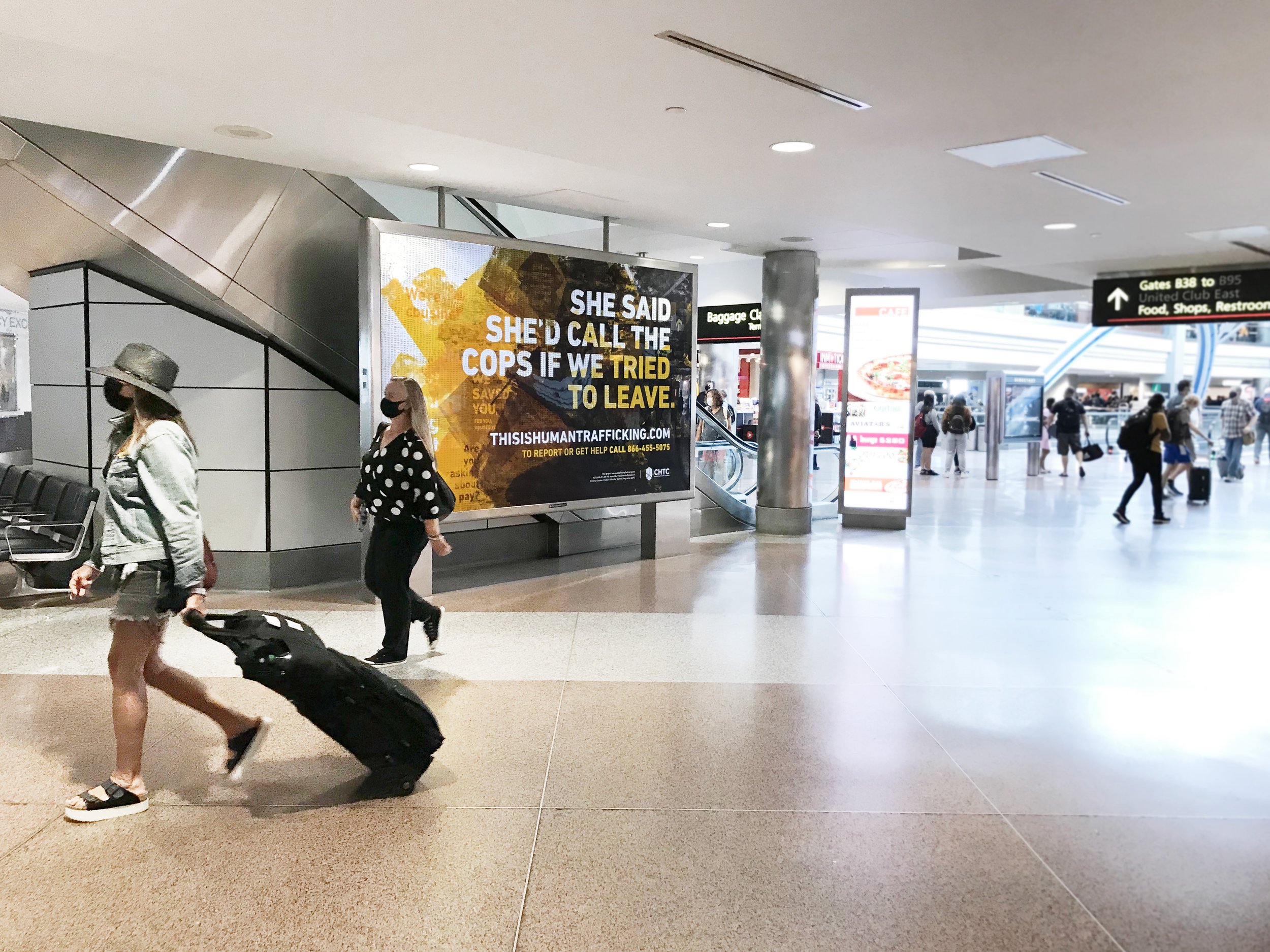Informing the public about a complex issue while fostering empathy for survivors.
Heartland Emmy / Silver Telly / Bronze Telly / Communicator Award for Excellence / Bronze One Club Award: Moving Image
client
Colorado Department of Public Safety, Human Trafficking Council
work
“This is Human Trafficking” Awareness Campaign
Creative direction / Art direction / Concept development / Campaign design / Website Design / Development + tactical execution (traditional + digital + social)
By illustrating how a trafficker employs coercive statements to exploit a survivor’s vulnerabilities, the audience can witness the escalation from initially kind and flattering words to manipulative and threatening behavior. This demonstrates how traffickers can prey on anyone who is vulnerable—even you or a loved one.
research driven.
This campaign was informed by countless hours of survivor interviews, input from the Colorado Human Trafficking Council, and research conducted with the public. Our efforts focus heavily on demonstrating how vulnerabilities are exploited by traffickers and how anyone can fall into this dangerous and terrible situation.
survivor informed.
We worked with a great sense of purpose to paint an accurate and empathetic picture respectful of survivors and their experiences. The campaign narratives are the result of composite survivor interviews and research into actual human trafficking cases.
conscientious representation.
Many human trafficking awareness campaigns have shown sensationalized and inaccurate images that misinform the public and stereotype victims, survivors, and traffickers. Our campaign avoids showing faces to allow the viewer to imagine themselves or someone they know in a trafficking situation.
project details
-
The campaign targets Colorado residents with little to no awareness about all aspects of human trafficking — anyone that might be called to serve on a jury for a human trafficking case.
-
“This Is Human Trafficking” came to life using the deep insights uncovered during our discovery phase. We interviewed multiple audiences and stakeholders, placing the utmost importance on human trafficking survivors and their lived experiences. Many of their stories informed our emotional and provoking campaign, giving it an authentic and accurate voice. The campaign vision came through by raising awareness and allowing the audience to “be in the shoes” of human trafficking survivors. The campaign is non discriminatory: removing preconceived stigmas and unconscious bias. We showed no faces because people often think they know what a trafficker looks like or what a victim looks like, but the truth is traffickers can be anybody, targeting and victimizing anyone.
-
• Significantly more respondents believe that people are being forced to work for little or no pay or to work to pay off debt (labor trafficking)
• Significantly more respondents believe human trafficking needs more action and support (from 3.5 to 4.86 on a 5-point scale)
• More respondents reported a willingness to call a human trafficking hotline
• One-third of respondents report hearing about human trafficking in the last 3 months
• One-fourth recall seeing a specific ad with 93% of those believing they have an increased awareness about different types of human trafficking
• Just over 40% of respondents that were aware of human trafficking messages recall the campaign tagline, “This is Human Trafficking”











